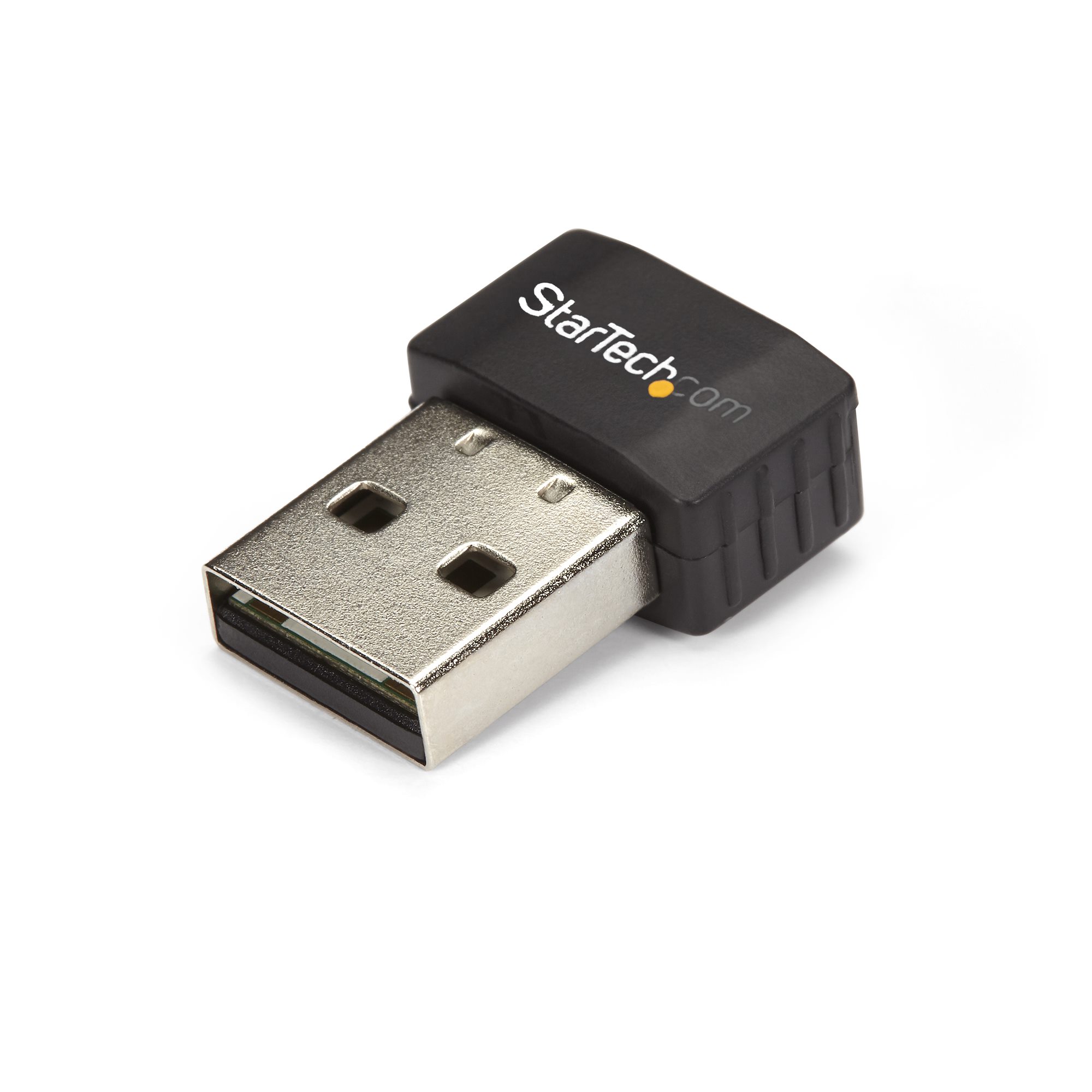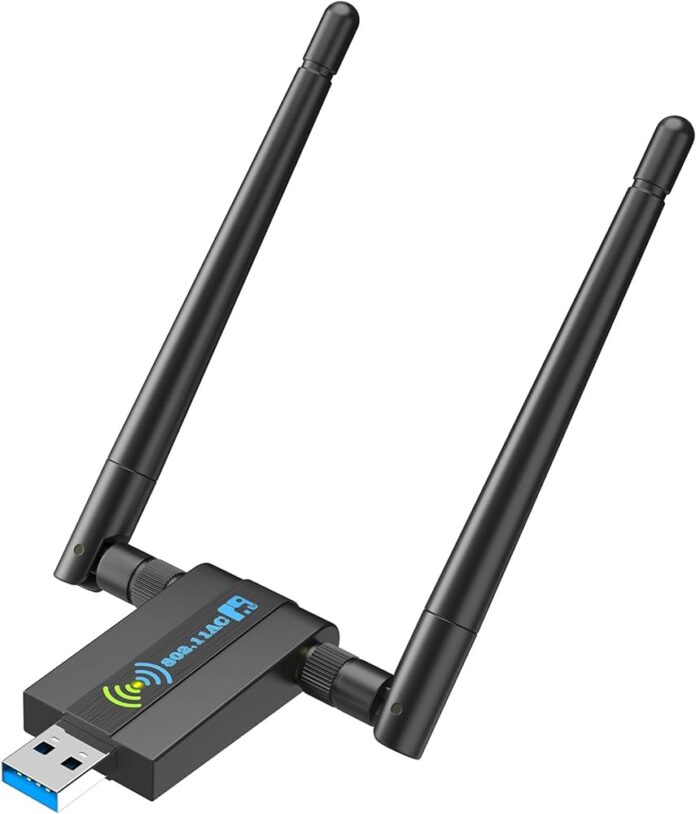With the rise of online learning and remote work, having a reliable internet connection is more important than ever. However, not all devices come equipped with built-in WiFi capabilities, especially older laptops or desktop computers. This is where a USB WiFi adapter comes in handy.
A USB WiFi adapter is a small device that plugs into your computer’s USB port and allows you to connect to a wireless network. It essentially acts as an external WiFi card and can provide a stable and fast internet connection even if your device doesn’t have built-in WiFi capabilities.
In this blog post, we will discuss the benefits of using a USB WiFi adapter for online learning, key features to look for when choosing one, top-rated options for different budgets, how to install and troubleshoot common issues, and tips for maximizing its performance. So let’s dive in!
Benefits of Using a USB WiFi Adapter for Online Learning
- Seamless Connectivity
The main benefit of using a USB WiFi adapter for online learning is its ability to provide seamless connectivity. With a stable and fast internet connection, you won’t have to worry about getting disconnected during virtual classes or experiencing lags while streaming educational videos.
Moreover, some USB WiFi adapters offer dual-band connectivity, which means they can operate on both 2.4GHz and 5GHz frequencies. This allows for better signal strength and less interference, resulting in a smoother online learning experience.
- Cost-Effective Solution
Purchasing a new device with built-in WiFi capabilities can be expensive, especially if your current device is still functioning well. In such cases, investing in a USB WiFi adapter is a much more cost-effective solution. These adapters are relatively inexpensive and can save you from having to buy a new device just for WiFi connectivity.
- Portable and Easy to Use
Another advantage of USB WiFi adapters is their portability and ease of use. They are small and lightweight, making them easy to carry around in your laptop bag or pocket. Plus, they don’t require any complicated installation processes. Simply plug it into a USB port, install the driver software, and you’re good to go.
- Compatibility with Multiple Devices
USB WiFi adapters are also compatible with a wide range of devices, including laptops, desktops, and even gaming consoles. This means you can use the same adapter for all your devices, making it a convenient and versatile option.
- Upgrade Existing Devices
If you have an older device that doesn’t have built-in WiFi capabilities, using a USB WiFi adapter is a great way to upgrade it. You won’t have to spend money on a new device, and you’ll still be able to enjoy a fast and stable internet connection.
Key Features to Look for in a USB WiFi Adapter
When choosing a USB WiFi adapter for online learning, there are a few key features that you should consider to ensure you get the best performance and value for your money. These include:
- Wireless Standards
The first thing to look for in a USB WiFi adapter is the wireless standard it supports. The most common standards are 802.11n, 802.11ac, and 802.11ax (also known as Wi-Fi 6). The higher the number, the faster the adapter will be. However, keep in mind that your router also needs to support the same standard for you to benefit from its speed.
- Speed and Range
The speed and range of a USB WiFi adapter are crucial factors to consider, especially for online learning where you need a stable and fast connection. Look for adapters with at least 300 Mbps speeds and dual-band capability (2.4GHz/5GHz) for better performance. Additionally, check the range of the adapter to ensure it can cover the distance between your device and the router.
- Security Features
Since you’ll be using your USB WiFi adapter to connect to the internet, it’s essential to consider its security features. Look for adapters with encryption protocols such as WPA2, which provide a secure connection and protect your data from being compromised.
- Compatibility
As mentioned earlier, USB WiFi adapters are compatible with various devices. However, it’s essential to check if the adapter is compatible with your specific device before making a purchase. Some adapters may only work with Windows devices, while others may also support Mac or Linux systems.
- Ease of Use
Some USB WiFi adapters come with additional software and features that can enhance your experience. For example, some allow for easy setup and management of your wireless network, while others offer advanced security settings. Consider these features when choosing an adapter to find one that best suits your needs.
Top-Rated USB WiFi Adapters for Different Budgets

Now that you know what to look for in a USB WiFi adapter, let’s take a look at some top-rated options for different budgets:
- TP-Link Archer T3U Plus ($20-$30)
The TP-Link Archer T3U Plus is a budget-friendly option that offers high-speed connectivity (up to 600 Mbps) and dual-band capability. It also supports WPA/WPA2 encryption for secure connections and is compatible with Windows, Mac, and Linux systems.
- NETGEAR Nighthawk AC1900 WiFi USB Adapter ($50-$60)
For those willing to spend a bit more, the NETGEAR Nighthawk AC1900 offers impressive speeds of up to 1900 Mbps and dual-band capability. It also comes with a magnetic cradle for flexible placement and better range.
- Asus PCE-AX58BT AX3000 Dual Band PCI-E WiFi Adapter ($100-$120)
If you’re looking for a high-end option, the Asus PCE-AX58BT offers Wi-Fi 6 (802.11ax) technology for ultra-fast speeds and better performance in crowded networks. It also supports Bluetooth 5.0 and has a detachable antenna for improved range.
- Linksys WUSB6300 Dual-Band AC1200 Wireless Adapter ($50-$60)
Another budget-friendly option, the Linksys WUSB6300 offers dual-band connectivity, speeds of up to 867 Mbps, and WPA/WPA2 encryption. It’s compatible with Windows and Mac devices and comes with a USB 3.0 interface for faster data transfer.
- Apple Thunderbolt to Gigabit Ethernet Adapter ($30-$40)
For Mac users who prefer a more compact and minimalist option, the Apple Thunderbolt to Gigabit Ethernet adapter is an excellent choice. It allows you to connect to the internet via an Ethernet cable and is compatible with Thunderbolt 2 and Thunderbolt-enabled Mac devices.
Comparison of USB WiFi Adapters: Speed, Range, and Compatibility
| USB WiFi Adapter | Speed | Range | Compatibility |
|---|---|---|---|
| TP-Link Archer T3U Plus | Up to 600 Mbps | Up to 100 meters | Windows, Mac, Linux |
| NETGEAR Nighthawk AC1900 | Up to 1900 Mbps | Up to 300 feet | Windows, Mac |
| Asus PCE-AX58BT AX3000 | Up to 3000 Mbps | Up to 100 meters | Windows, Mac |
| Linksys WUSB6300 | Up to 867 Mbps | Up to 100 feet | Windows, Mac |
| Apple Thunderbolt to Gigabit Ethernet Adapter | N/A | N/A | Thunderbolt 2 and Thunderbolt-enabled Mac devices |
From the comparison table, it’s evident that the higher-priced options offer faster speeds and longer ranges. However, this doesn’t mean that the budget-friendly options are not suitable for online learning. It ultimately depends on your specific needs and budget.
How to Install and Set Up a USB WiFi Adapter

Installing and setting up a USB WiFi adapter is a relatively straightforward process. Here’s a step-by-step guide to help you:
- Start by plugging the adapter into a USB port on your device.
- If your operating system (OS) prompts you to install any software or drivers, follow the instructions to do so. Usually, you can find the necessary software on the manufacturer’s website or included in the package.
- Once the driver installation is complete, go to your device’s network settings and select the USB adapter to connect to the internet.
- If prompted, enter the password for the wireless network you want to connect to and click “Connect.”
- Your adapter should now be connected to the internet, and you can start using it for online learning or other activities.
Troubleshooting Common Issues with USB WiFi Adapters
While USB WiFi adapters are generally easy to set up and use, you may encounter some common issues along the way. These include:
- Driver Installation Failure
If the driver installation fails, try downloading the latest driver from the manufacturer’s website. You can also try uninstalling and reinstalling the driver or using a different USB port.
- Slow or Unstable Connection
If you’re experiencing slow or unstable connection issues, make sure your adapter is compatible with your router’s wireless standard. You can also try moving closer to the router or changing the adapter’s position for better signal strength.
- Interference Issues
If you live in an area with multiple WiFi networks, your adapter may face interference, resulting in a poor connection. To avoid this, change the channel of your router or invest in a dual-band adapter that can operate on the 5GHz frequency.
- Compatibility Issues
If your adapter is not compatible with your device, it won’t work no matter what you do. So make sure to check compatibility before making a purchase.
Tips for Maximizing WiFi Performance with a USB Adapter
- Ensure Your Router is Up to Date
An outdated router may result in slower speeds and connectivity issues. Make sure to update your router’s firmware regularly to improve its performance.
- Place Your Router in an Optimal Location
The position of your router can also affect its performance. Place it in a central location away from obstructions for the best coverage.
- Use a WiFi Extender
If your router’s range is not sufficient, consider investing in a WiFi extender to boost its signal strength.
- Keep Your Adapter Clean
Dust and debris can accumulate on your USB WiFi adapter, affecting its performance. Regularly clean it with a soft cloth to keep it functioning at its best.
- Avoid Overcrowding Your Network
If too many devices are connected to your network, it may result in slower speeds and connection issues. Disconnect any unnecessary devices to optimize your network’s performance.
Conclusion: Choosing the Best USB WiFi Adapter for Your Online Learning Needs
In conclusion, a USB WiFi adapter is an essential tool for enhancing your online learning experience. It provides seamless connectivity, is cost-effective, portable, and compatible with various devices. When choosing one, consider the wireless standards, speed and range, security features, compatibility, and ease of use.
Some top-rated options for different budgets include the TP-Link Archer T3U Plus, NETGEAR Nighthawk AC1900, and Asus PCE-AX58BT AX3000. However, keep in mind that the best adapter for you may depend on your specific needs and budget.
Installing and setting up a USB WiFi adapter is relatively easy, but you may encounter some common issues such as driver installation failure, slow or unstable connection, interference, and compatibility issues. By following the tips provided, you can maximize the performance of your adapter and enjoy a seamless online learning experience.
